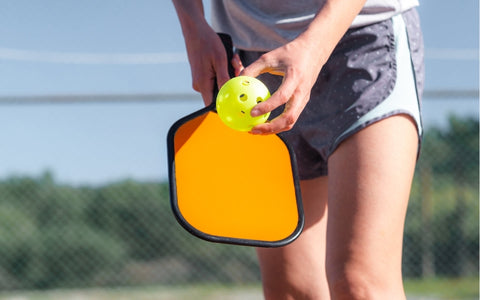No Products in the Cart
As with any sport, the equipment you use significantly impacts your performance. For pickleball enthusiasts, one of the most important pieces of equipment is the paddle. However, just owning a high-quality paddle isn't enough, maintaining it properly is key to ensuring it lasts long and performs well in every game. A crucial aspect of this maintenance is keeping your paddle clean. Dirt, sweat, and grime can accumulate on the paddle's surface and handle, affecting your grip and the paddle's responsiveness.
This article aims to provide a comprehensive, easy-to-follow guide on how to clean your pickleball paddle effectively, ensuring it remains in top condition for every match.

Over time, paddles can collect dust, dirt, and sweat, leading to a slippery grip and a surface that doesn't interact with the ball as intended. This can result in a loss of control and power, hindering your gameplay. Additionally, regular cleaning can extend the life of your paddle by preventing the buildup of materials that can degrade its surface and structure. Maintaining a clean paddle ensures you get the best possible experience every time you play, keeping your game sharp and your shots precise.
Before diving into the cleaning process, it's essential to understand what your paddle is made of. Pickleball paddles come in various materials, including graphite, composite, and wood, each requiring specific care to maintain their condition and performance.
Knowing the material of your paddle will help you choose the right cleaning method and products, ensuring you don't accidentally damage it during the process.
Keeping your pickleball paddle clean is not just beneficial for its longevity but also for your performance in the game.
Here's a detailed guide to help you clean your paddle effectively:
Before you start, ensure you have all the necessary materials at hand.
You will need:
Start with the general cleaning of the paddle's surface:
For areas that are harder to clean, such as the handle and the edges:
Once the paddle is clean:
Depending on the material of your paddle, you might need to follow specific care instructions:

To ensure your paddle stays in top condition, here are some do's and don'ts to keep in mind:
Beyond regular cleaning, proper storage and handling of your paddle can further extend its life and maintain its performance:
Regularly cleaning your pickleball paddle is important for maintaining its condition and ensuring optimal performance during play. By following the steps outlined in this guide, you can keep your paddle looking new and functioning well for years to come. Remember, the care you put into maintaining your equipment reflects your dedication to the sport of pickleball.
Happy playing, and remember to keep your paddle clean for the best possible performance on the court!
If you want to read more about pickleball, make sure to check out Born to Rally blog.